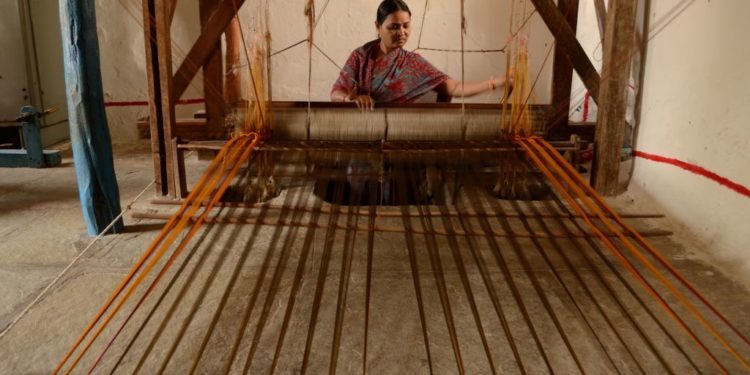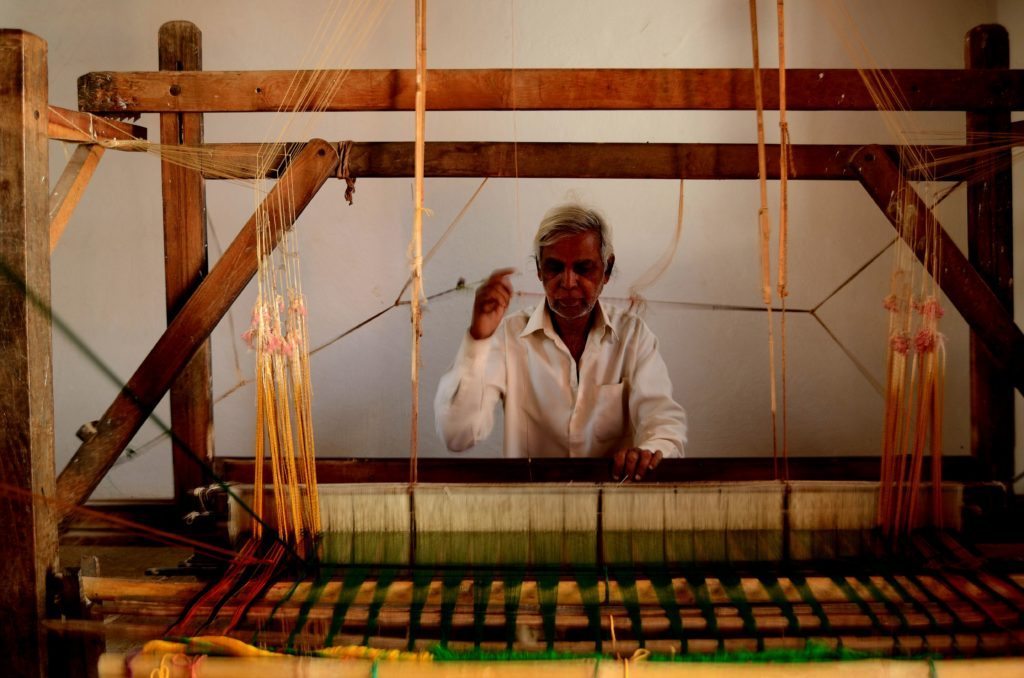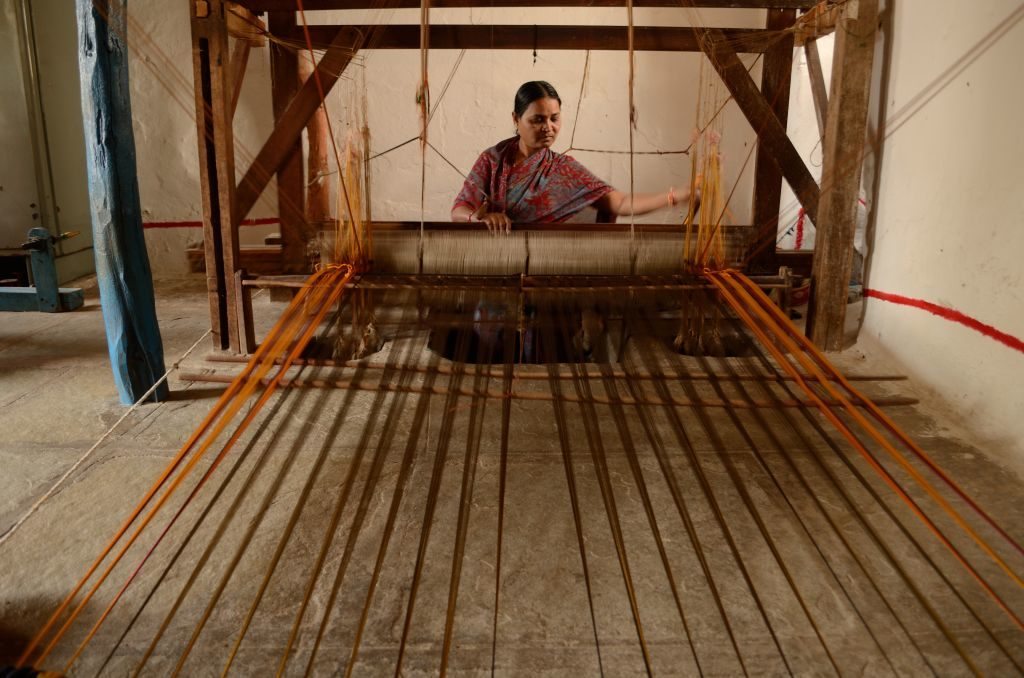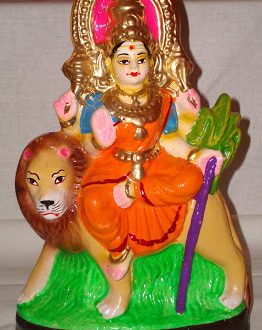Meeting the weavers of Narayanpet sarees

Ramchander sits in the corner of his small room, his face framed by his loom, as he mechanically sets it in motion. The evening sun from a tiny window falls on him as a door opens and a couple of curious kids enter. The room is otherwise dark and dusty, but for the larger than life collage of bright yellow and orange threads that has wrapped him in a web. They surround him everywhere, stretching from one end of the room to the other and are held in place by weights. Thin asbestos sheets cover the roof of the room, while threads dangle from the wooden planks supporting them. Old faded photographs of Gods and Goddesses adorn the walls. As I photograph the weaver at work, the kids watch me in sheer fascination. No visitor, I am told, have walked into their homes for years.
Narayanpet is not really a tourist destination. It is not even a destination to begin with. A small town with a population of 50,000 people, Narayanpet lies in the border between Andhra Pradesh and Karnataka. I walk around the main street where some jewellers have set up shop. The setting is rather quaint. I see small shops with white mattresses laid out where the jewellers are sitting beside their desks, speaking on the phones or negotiating with a lone customer. Old exquisite houses with some jaali work lie faded in a corner. There are small lanes that take you to huddled houses decorated with colourful rangoli. Adorned with brightly coloured doors, they open into the homes of the weavers, where a handful of looms are creating music. Kids play around in the narrow alleys while smelly pigs grunt around in the drains.
This town was once famous for its cotton and silk sarees, but today the weavers have hardly any buyers Ramchander speaks about the days when the streets were draped with sarees. The houses used to echo with the rhythm of the handlooms and almost everyone was a skilled artisan. They came from every community and religion. There were Telugus, Marathis and Kannadigas and both Hindus and Muslims worked together to create magic with their fingers. But today, there are barely 2000 looms in the entire town. And most of the younger generation have left Narayanpet to pursue their fortunes elsewhere.
We walk along and enter an ancient house with an open courtyard, cheerfully painted in shades of yellow and red. It belongs to a family from Maharashtra who had moved in here almost a century ago and is one of the few today who run a whole sale shop in the town. Speaking to Ramesh Kalyani of Kalyani & Sons, I hear that their story is no different . Today, they manage to support weavers like Ramchander but they can hardly pay more than Rs 175 for a silk saree and barely Rs 100 for a cotton to them. “We would like to give more but we have no buyers today. At one time, we used to sell in Mumbai, Pune, but now it is mainly the south,” says Ramesh.
We sit down as the white mattress gets painted by an array of colours. The sarees are spread out in front of us, the silk caressing our skin, as we drape it around us. The colours brighten up the mood, the traditional motifs and rich designs come alive as bright gold borders adorn the rich tapestry of colours. The rainbow is in front of us, soft and silky and comes with myriad shades and patterns. I am lost in the many blues and reds and as the silk rustles in my hands, I hear the clickety-click of another handloom at work. As I feel the beautiful piece of fabric in my hands, I realise why Narayanpet should be a destination for people.




Advise if we can connect for an mutual business share. you have my email address to reply
http://brandife.com
Hi Lakshmi,
Very informative post. Can you share the contact details of the weaver? It will be a great help.
Many Thanks in advance.
Regards